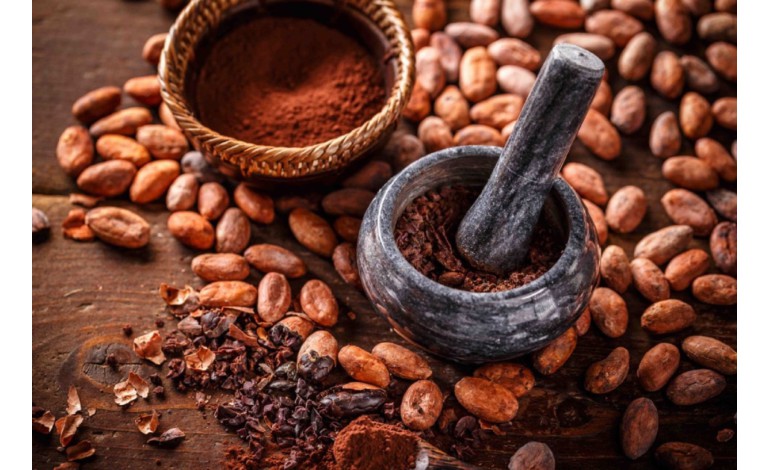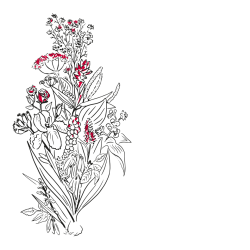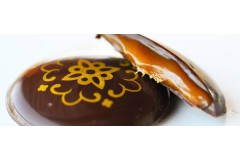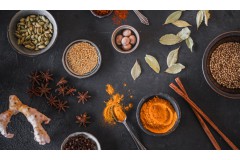The discovery of the cocoa by the olmèques
Historians believe that the Olmecs first discovered that the fruit of the cocoa was edible by observing rats eating it. Olmecs (1500-400 BC) were certainly the first humans to consume chocolate, originally in the form of a drink. They crushed cocoa beans, mixed them with water and added spices, peppers and herbs. They started to grow cocoa in equatorial Mexico. Over time, Mayans (600 BC) and Aztecs (400 AD) have also developed effective methods to grow cocoa. The cocoa bean was used as a monetary unit and as a measurement unit, 400 beans equivalent to a zontli and 8000 to an XIQUIPILLI. During their wars with the Aztecs and the Mayans, the favorite method of the chemimeken people to collect taxes in the conquered regions was in the form of cocoa beans.
For these civilizations, cocoa was a symbol of abundance. It was used in religious rituals dedicated to Quetzalcoatl (feathered serpent), the Aztec god responsible for bringing the cocoa to man, to Chak Ek Chuah, the patron saint of cocoa and as an offering during the noble funeral.
The production of cocoa has progressed as people migrate through the meso-American, but the consumption of the drink remained a privilege for the upper classes and for the soldiers during the battle. At that time, the invigorating and fortifying virtues of cocoa were increasingly widely recognized and adopted.
Discovery and marketing of cocoa (16th century)
In 1502 during his fourth trip, Christopher Columbus saw for the first time cocoa beans on a native canoe during a stopover in Nicaragua, but he did not appreciate his impressive potential value. The real importance of this "brown gold" was only recognized when Hernando Cortez drank it with the emperor Aztec Montezuma and brought it back to the Spanish court in 1528 with the equipment necessary to stir the drink . Even then, it is unlikely that whoever considered its ultimate importance as a global goods.
After a victorious war against the native tribes and the fall of Aztec civilization, Cortez intensified its culture efforts in New Spain, with the intention of developing a lucrative trade with Europe.
The Spanish Court quickly falls in love with this exotic elixir and adapts it to its taste by adding cane sugar, vanilla, cinnamon and pepper. Initially, Spain reserved cocoa for its exclusive use, carefully protecting its existence from the rest of the world. They have so well succeeded in keeping the cocoa secret that when a group of English pirates captured a Spanish galleon, not recognizing the value of the heavy cargo of beans, they burned it!
In 1585, the first cargo of cocoa beans arrived on the Iberian peninsula from New Spain, launching the cocoa trade and leading to the establishment of the first chocolateies, thus inaugurating a new era of demand in rapid growth for this mysterious nectar of the new world.
The expansion of cocoa in Europe (XVIIth - 19th centuries)During the 17th century, cocoa began to arrive in other European ports, effortlessly conquering the palace of all regions. Chocolate drinks were adopted for the first time by the Court of France after the royal marriage of King Louis XIII with the Spanish princess Anne of Austria in 1615.
In 1650, chocolate drinks appeared for the first time in England, coinciding with the arrival of China tea and the Middle East coffee. For many years, there has been a treat reserved for upper classes. In 1659, the first chocolate factory-confiserie opened in Paris. In 1720, Italian chocolate makers received prizes rewarding the quality of their products. Finally, in 1765, North America discovered the virtues of cocoa.
In this way, chocolate has developed across Europe and in the world, and slowly the presentation of chocolate has changed. The first chocolate pastille appeared in England in 1674; The cocoa powder was initially produced by the Dutch in 1828; The chocolate tablet was born in Great Britain in 1830; And, the Swiss successfully entered the chocolate market with milk chocolate in 1830, followed shortly after with chocolate impregnated with hazelnuts.
Thanks to this long period of culinary and manufacturing innovations, chocolate consumption has quickly and continuously increased. Pharmacological uses of cocoa and cocoa derivatives have also been widely explored, which is not too surprising given the properties that its first consumers attributed to it (that is to say strengthening, repairing, aphrodisiac). < BR />
Max Daumin
Epices Max Daumin
or 2017-2018 silver 2020-2021 bronze 2019 | National grocery trophy
Artisan producer of the Culinary College of France 2022









